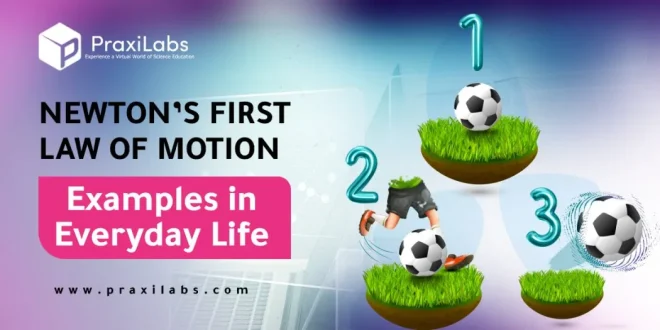Last Updated on October 11, 2025 by Muhamed Elmesery
Newton’s laws of motion are three physical laws that establish the science of kinematics. These laws describe the relationship between the motion of an object and the force acting on it. They are essential because they are the foundation of classical mechanics, one of the main branches of physics. It was Isaac Newton who established these laws, and he used these laws to explain many physical systems and phenomena.
In this article, we will discuss Newton’s first law of motion examples in everyday life.
Create a FREE Virtual Labs Account Now!
Table of Contents
Sir Isaac Newton
If we are going to talk about classical mechanics and applications of Newton’s laws of motion in daily life, we must first shed light on the founder of these laws and the one who has the credit for bringing them out to us, Sir Isaac Newton. Here are some quick facts about Isaac Newton
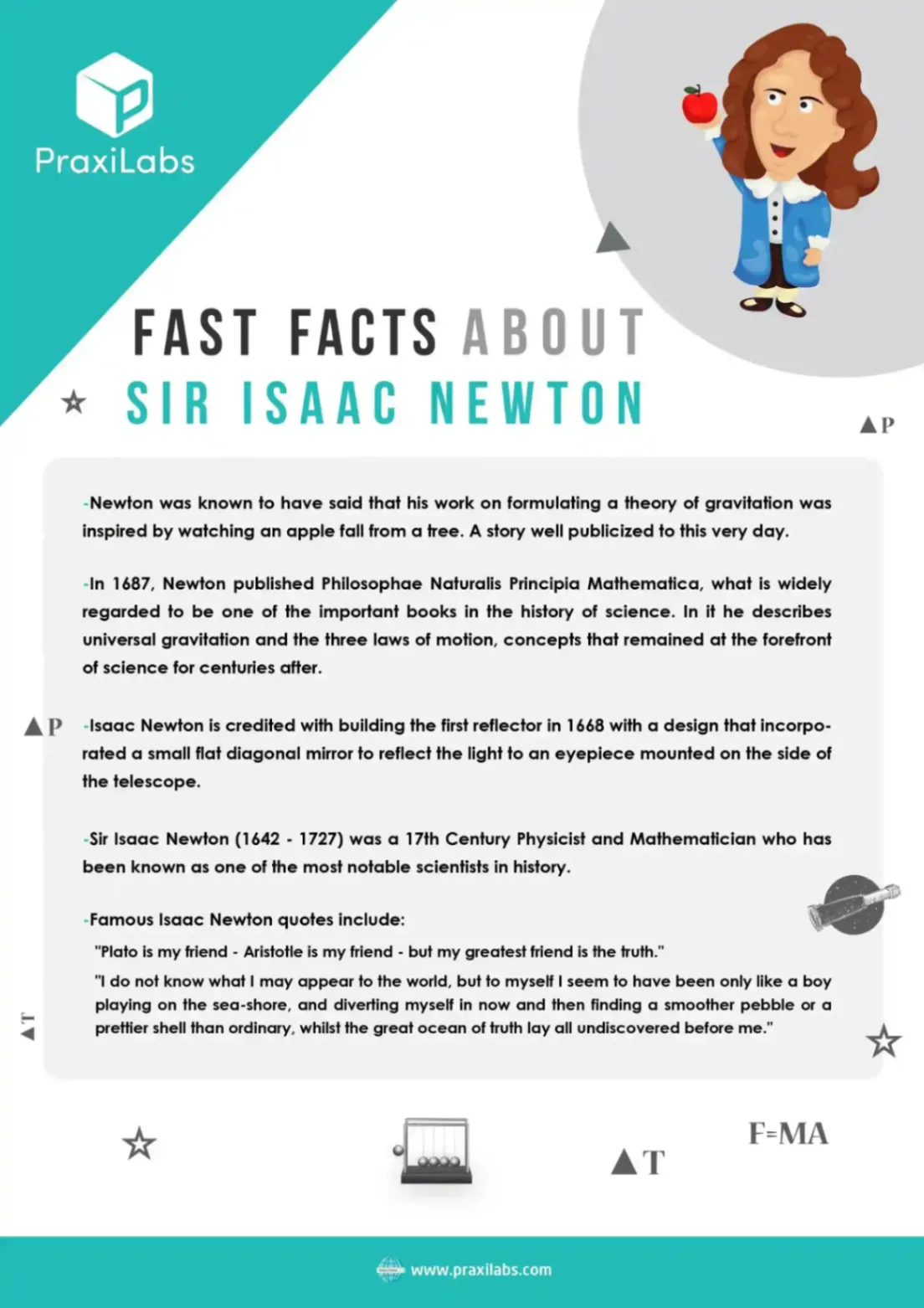
Newton’s laws of motion were first published by Isaac Newton in his Philosophiæ Naturalis Principia Mathematica in 1687 in 1687, which is the basis of classical mechanics. Newton used these laws to explain and investigate many physical phenomena. Newton showed that these laws in addition to the law of universal gravitation are able to explain Kepler’s laws of planetary motion, and these laws are still among the most important physical laws so far.
For more information about Sir Isaac Newton and the other laws of motions, visit our blog Applications of Newton’s Laws of Motion in Daily Life.
Newton’s First Law of Motion
It says that
“An object at rest will stay at rest, and an object in motion will stay in motion unless acted on by a net external force”
Explanation of Newton’s First Law
This means that motion cannot change or decrease without the effect of an unbalanced force. If nothing happens to you, you will never go anywhere. If you’re going in a certain direction, unless something happens to you, you’ll always go that way forever.
That is, if the resultant force (the vector sum of the forces acting on the body) is zero, then the velocity of the object is constant. When we say that the velocity of an object is constant, we mean that both magnitude and direction are constant.
Now we’ll show you a good example for illustration, when you see a video of astronauts. Have you ever noticed that their tools are floating? They can only place them in space and stay in one place. As there is no force to intervene to change this situation.
The same applies when they throw objects at the camera; these objects move in a straight line. Meaning, if they drop an object while in space, that object will continue to move in the same direction and at the same speed unless interfered with.
Start Free virtual experiments from HERE!
Newton’s First Law Formula
Newton’s first law of motion equation is
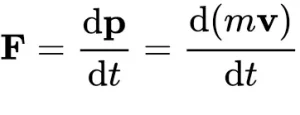
where
V is the velocity of the object,
t is the time,
And F is the force
This means that we can say that a static body will remain static unless it is affected by external forces, and a moving body does not change its velocity as long as no external force affects it.

Inertia
The principle of inertia is one of the basic principles in classical physics that is still used today to describe the motion of things and how it is affected by the forces applied to them.
The term inertia may be referred to as “the amount of resistance of an object to a change in velocity” or “resistance to change in motion.” This includes changes in the speed of the object or the direction of motion. One aspect of this property is the tendency of things to continue to move in a straight line at a constant speed, when no forces are affecting them.
The above can be summarized by the following
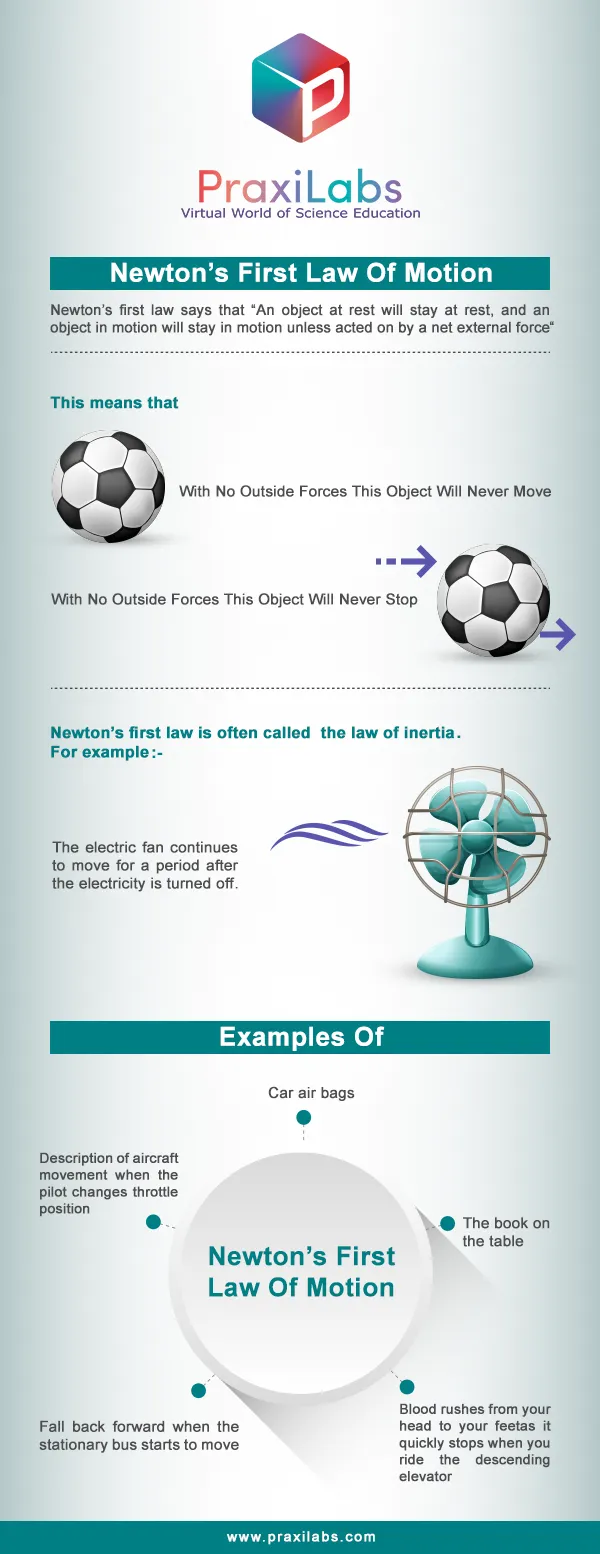
Types of Inertia
- Inertia of rest
An object stays where it is placed, and it will stay there until you or something else moves it.
- Inertia of motion
An object will continue at the same speed until a force acts on it.
- Inertia of direction –
An object will stay moving in the same direction unless a force acts on it.

For further understanding, you can try our online physics experiments. All you have to do is just create a free account
Gamified Learning for Understanding Inertia | STEM Projects
There are several STEM projects that demonstrate the concept of inertia. Here are a few examples:
- Rocket ship 3D modeling
By allowing students to create 3D models of their names on a rocket ship and then 3D-printing them, we provide a hands-on activity related to inertia and space exploration, helping them better understand the concept of inertia.
- Egg drop inertia experiment
An egg drop experiment is described as a fun way to demonstrate the first law of motion or inertia. This experiment involves dropping an egg and observing its tendency to retain its motion or lack of motion until an external force is applied.
- Inertia zoom ball
The inertia zoom ball project involves conducting a simple science experiment using string and plastic bottles to demonstrate the concept of inertia. This experiment is suitable for active students and provides a hands-on way and STEM education tool for the law of inertia.
These projects offer gamified learning for understanding inertia in a STEM learning environment.
How to Investigate the Relationship Between Mass and Inertia?
The relationship between mass and inertia is very important to understand the behavior of objects in motion. Here’s a summary of the relationship between mass and inertia:
All objects resist changes in their state of motion; this tendency is known as inertia. But do some objects exhibit a greater tendency to resist changes than others? Absolutely yes! The tendency of an object to resist changes in its state of motion varies with mass (Remember: Mass is the quantity that is solely dependent upon the inertia of an object).
The greater the inertia an object has, the more mass it possesses. A more massive object has a greater tendency to resist changes in its state of motion.
Suppose that there are two seemingly identical bricks at rest on the physics lecture table. Yet one brick consists of mortar and the other brick consists of Styrofoam. Without lifting the bricks, how could you tell which brick was the Styrofoam brick? You could give the bricks an identical push in an effort to change their state of motion. The brick that offers the least resistance is the brick with the least inertia – and therefore the brick with the least mass (i.e., the Styrofoam brick).
A common physics demonstration relies on the principle that the more massive an object is, the more it resists changes in its state of motion.
The demonstration goes as follows: several massive books are placed upon a teacher’s head. A wooden board is placed on top of the books and a hammer is used to drive a nail into the board. Due to the large mass of the books, the force of the hammer is sufficiently resisted (inertia). This is demonstrated by the fact that the teacher does not feel the hammer blow. (Of course, this story may explain many of the observations that you previously made concerning your “weird physics teacher.”) A common variation of this demonstration involves breaking a brick over the teacher’s hand using the swift blow of a hammer. The massive bricks resist the force and the hand is not hurt.
Newton explained that the mass of an object is a measurement of its inertia. In other words, objects with different masses, moving at the same speed, will have different inertial properties, with the one having greater mass exhibiting greater inertia.
In summary, the relationship between mass and inertia is such that the mass of an object directly influences its inertia. Heavier objects have more inertia than lighter objects, and mass serves as a measure of an object’s resistance to changes in its state of motion.
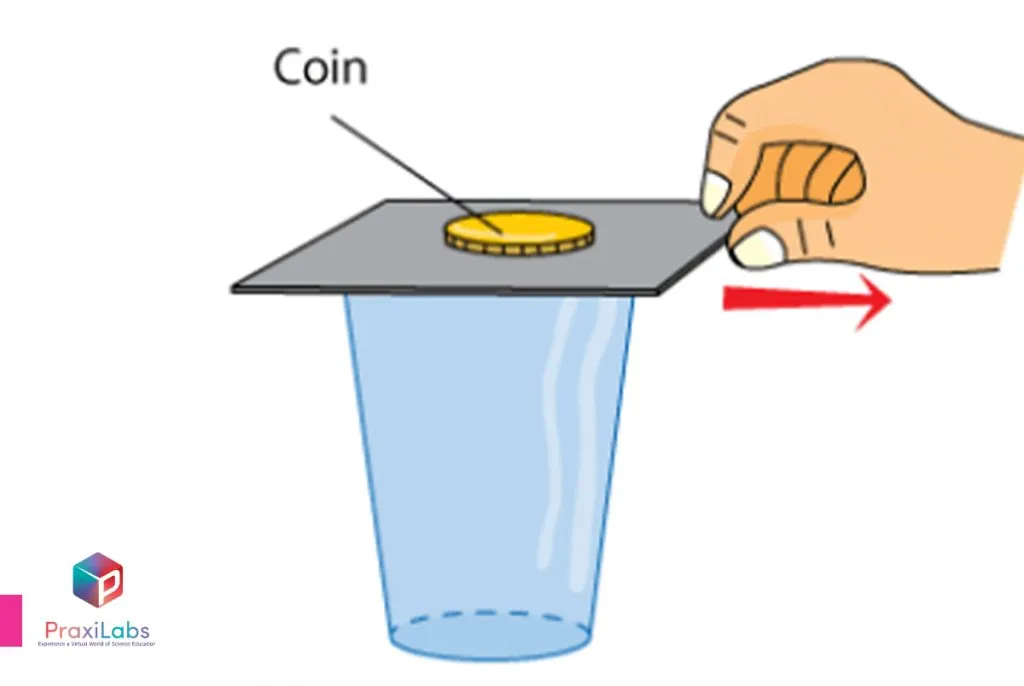
Real Life Examples of Newton’s First Law (Examples of Law of Inertia)
Now we will show some examples newton’s first law of motion examples in everyday life:
- The electric fan continues to move for a period after the electricity is turned off.
- When the bus stops suddenly, people fall forward.
- If an index card is placed on top of a glass with a penny on top of it, the index card can be quickly removed while the penny falls straight into the glass, as the penny is demonstrating inertia.
- If an index card is placed on top of a glass with a penny on top of it, the index card can be quickly removed while the penny falls straight into the glass, as the penny is demonstrating inertia.
- If a ball is on a slanted surface and you let go, gravity will make it roll down the slope. It has inertia, and if there is a level area at the bottom of the slope, it will continue moving.
- If you are on a train and the train is moving at a constant speed, a toy tossed into the air will go straight up and then come down. This is because the toy has inertia like the train and you.
- If you jump from a car or bus that is moving, your body is still moving in the direction of the vehicle. When your feet hit the ground, the grounds act on your feet and they stop moving. You will fall because the upper part of your body didn’t stop, and you will fall in the direction you were moving.

Newton’s First Law of Motion Examples in Everyday Life
In our daily life, the occurrence of things around us can be explained according to Newton’s first law (newton’s first law of motion examples in everyday life), for example:
- The book on the table stays in place unless it is dislodged.
- Blood rushes from your head to your feet as it quickly stops when you ride the descending elevator.
- The hammer head can be tightened against the wooden handle by striking the bottom of the handle against a hard surface.
- While riding a skateboard (or cart or bike), you fly forward away from the board when you hit a sidewalk, rock, or anything else that suddenly stops the skateboard.Check Also: Applications of Newton’s Second Law of Motion
How Is Newton’s First Law Used in Everyday Life?
To understand how this is done, we will give two examples:

1) A Parachutist Who Jumps from an Aeroplane
Consider a parachutist who jumps from an aeroplane that is travelling horizontally. The initial vertical speed of the parachutist is zero. However, he will immediately be acted upon by his weight acting vertically downwards and since the external resultant force is not zero he will accelerate downwards. As the parachutist’s speed increases so does the air resistance. This opposes the downwards force of his weight and means that he will not increase in speed indefinitely.
Eventually the air resistance will increase until it equals his weight. At this point the resultant force on the parachutist will be zero and he will stop accelerating; instead he will continue to fall at a constant or terminal velocity. When the parachutist pulls the rip-cord and the parachute is opened, the air resistance is suddenly increased such that it is greater than his weight.
The resultant force is upwards meaning that the parachutist will start to decelerate. This will continue with the air resistance reducing until the forces are again equal and the speed of fall is constant. At this point the terminal velocity should be only a few m s−1.

2) A Car Parked at Rest on A Hill
For a car parked at rest on a hill, the three forces (friction, weight, and normal reaction force) have zero resultant force. Friction balances the component of weight down a slope. If the vehicle moves with constant velocity, the driving force and resistive forces (air resistance and friction) must be equal in magnitude and opposite in direction.
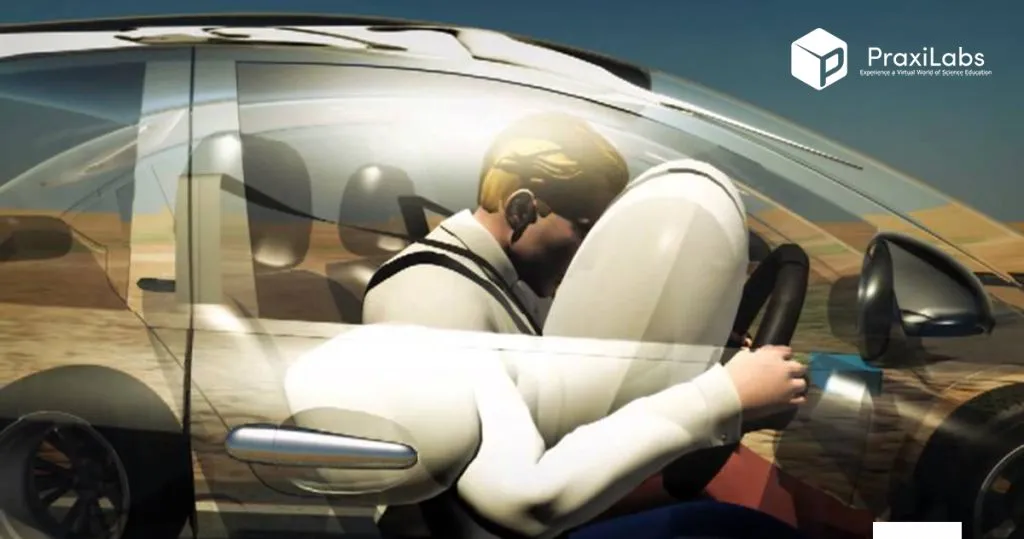
5 Real Life Applications of Newton’s First Law of Motion
1- Car Air Bags
The function of the air bag is to inflate in an accident and prevent the driver’s head from hitting the windshield. When a car with an airbag is exposed to an accident, the sudden slowdown in its speed leads to the operation of an electrical switch, and this starts a chemical reaction that produces a gaseous substance that works to fill the air bag and protect the driver’s head.
2- Baseball Is at Rest
It needs external force to move, gets thrown, or is hit. The distance the ball travels depends on the amount of force that acts on it.
3-The motion of a ball falling through the atmosphere or a model rocket launched into the atmosphere.
4- The Liftoff of a Rocket from the Launch Pad.
Just prior to engine ignition, the velocity of the rocket is zero and the rocket is at rest. If the rocket is sitting on its fins, the weight of the rocket is balanced by the reaction of the earth to the weight. There is no net force on the object, and the rocket would remain at rest indefinitely.
When the engine is ignited, the thrust of the engine creates an additional force opposed to the weight. When the thrust is greater than the weight, there is a net external force equal to the thrust minus the weight, and the rocket begins to rise. The velocity of the rocket increases from zero to some positive value under the acceleration produced by the net external force.
5- A Kite Flying through the Air
The forces acting on a kite in flight include the weight, the aerodynamic lift and drag, and the tension in the control line. In stable flight, these forces are all balanced and the kite holds a fixed altitude.
Explanatory Video of Newton’s First Law
Law of Inertia via Virtual Lab
Virtual lab simulations can provide a hands-on way to explore and understand the principle of Newton’s First Law and inertia. These virtual labs offer an opportunity to observe and understand how objects behave in accordance with the law of inertia, making the learning experience more interactive and engaging.
They also enrich the experimentation process through visual aids that guide the students through the process. Students no longer get stuck, but rather enjoy the help of a virtual lab partner when needed, while also receiving guidance to prevent wrong choices. Moreover, students are quickly tested on the basic results of their experiment to ensure an enhanced learning experience.
If you’re interested in conducting virtual lab experiments to further explore Newton’s First Law , you can explore many resources offering a range of 3D interactive and immersive science simulations. Additionally, there are educational platforms that provide virtual lab experiences for physics and mechanics, such as Newton’s First Law interactive simulation.

PraxiLabs Virtual Labs in Mechanical Physics
PraxiLabs for online experiment simulation enable you to conduct various laboratory experiments in physics, chemistry, and biology online anytime and anywhere.
Create your free account and try the virtual labs in mechanics that explain Newton’s laws of motion and newton’s first law of motion examples in everyday life.
 PraxiLabs A virtual world of science
PraxiLabs A virtual world of science

